If you're a 1st timer here, welcome to the blog! I hope you find the information interesting and helpful.
It is the end of May as I start typing up this blog update. I hope to publish it by the end of the week....so, sometime in 1st week of June. I have quite a few big updates to cover, some of which I will mention in this update and then publish much more of in separate updates. But, I hope to get all this info out before summer hits full swing. I likely will not get back to doing a blog update until fall. Here's what I have for this update:
1. 400 Ton Press Rebuild 99% Complete
2. More Kit #18 Parts
3. EAA Mobile Simulator - Just Getting Started
4. Lathe Cross Slide Repair (Needed A New Leadscrew & Nut)
5A. A Visit with Ernest
5B. Ray's Recent Work
5C. Bryce's Prowler Plan
5C. Francis Is Doing Great
5D. Eric's Progress In Montreal
As I mentioned above, there are two topics that I will cover briefly in this update, but then publish a separate update with a lot more info. I'll do this for the 400 Ton Press Re-assembly and for Bryce's FWF items for sale. That will help make this update a little shorter and if you are not interested in the details of these you won't have to sift through those long items to get to the other Prowler related update items.
In case you never noticed, you can go directly to any particular blog update by using the blog archive tool (by date) at the bottom of the right hand sidebar over here ------------>
Now, on with the show:
1. 400 Ton Press Rebuild 99% Complete - Wow! This has been a massive undertaking. Probably the biggest project I've done yet to get production equipment in place for Prowler Aviation. (Maybe it's a tie with the Motionmaster Router - that took less time, but had much more difficult systems and technology to learn.)
It's taken a year and a half to get to this point, but I think I can declare the mechanical rebuild of this press a complete success. The blog post covering the re-assembly of the press is so long that I will post it as an individual update dedicated solely to it. I will post this separate update shortly after I post this update.
Here is the Prowler Aviation Pumpkin Orange 400 Ton Rubber Pad Press.....All 4+ tons of it:
This is the machine that I will be able to take a die (for any given part), put a flat blank over it, put it on top of the red bolster, turn on the hydraulics, run the bolster up into the rubber pad, and.....out will come a Prowler part ready to be put on an airplane!!! At least, that is the theory.
To briefly re-cap this 400 Ton rubber pad press project, it goes like this:
A. Sep 2014 - I found this press for sale on a Craigslist ad after nearly 8 months of searching for a reasonably priced, high tonnage hydraulic press somewhere west of the Mississippi River. I bought it sight-unseen over the phone.
B. Nov 2014 - Went to pick up the press and move it from just south of Carson City, NV back to my shop.
C. Jan 2015 - Rigged the press off of the trailer and into the shop. Began doing research and CAD work for re-configuration of this press to a rubber pad press that would be big enough to make any Prowler part.
D. Mar-Apr 2015 - Designed and fabricated all the parts necessary to convert this slab-side press to a rubber pad press for forming airplane parts using the Guerin process. (Essentially, a "poor man's form of hydro-forming). Found the press to be leaking badly (hydraulic leaks around the main ram/rod seal).
E. May-Jun 2015 - Begin tear down of press. Removed clamp ring, seal and ram/rod for inspection. Found massive corrosion, pitting and contamination of the sealing cavity.
F. Nov 2015 - Designed and built a 3 Ton gantry crane to facilitate disassembling the press.
G. Dec 2015 - Used the gantry crane to disassemble the press into individual parts. Delivered cylinder and clamp ring to a local machine shop for clean up. Delivered ram/rod to Chrome Craft in Sacramento for rebuilding.
H. Jan 2016 - Cylinder and clamp ring work completed. Picked up parts and returned to shop.
I. Feb 2016 - Researched and ordered new urethane seal. Seal delivered.
J. Mar 2016 - Designed and fabricated mobile base platform for press.
K. Apr 2016 - Ram rebuilding (finally) completed. Ram picked up and returned to shop by end of month.
L. May 2016 - Press main frame reassembled. Installed the rubber pad press components and the temporary hydraulic unit. Tested the operation of the press and found that it operates up and down nicely and holds hydraulic pressure without leaking around the main seal.
Now, the only outstanding mechanical item remaining for this project is to get a rubber pad for it (urethane, actually). I will be researching the best solution for a urethane pad for this press over the next several weeks.
Before using this press in any kind of production, it will require a new, better hydraulic pumping unit. The hydraulic unit I am currently using is a kind-of cobbled-together, hodge-podge hydraulic system that I had available in the shop. It works for test running the press, but I will be looking to either build or buy a better hydraulic unit to run the press in production. More to follow on this.
2. More Kit #18 Parts - While I was eagerly waiting for the ram to get rebuilt, I had time to work on other Prowler projects. I decided to continue to work on the outstanding assemblies that I need to complete Kit #18 (The one that is inhabiting my shop office). Here are some of those assemblies that I've been working on.
I am trying a new system on this kit to actuate the radiator doors. George used a single linear actuator that moved a long torque tube that was connected to a radiator (and the doors) on either end. I think I can get rid of a lot of weight and complexity if I design a system that uses a single MAC servo to move each radiator door. I'm borrowing this design concept from Bryan. He's already built his Prowler with his radiator actuators like this. To design this, I used my CAD software program to lay out the motion of a small torque tube that sits above each radiator assembly and is long enough (side-to-side) to reach each door actuator link. Here is what that looks(ed) like (side view):
With the total length of the throw (up-to-down) now known (from fully opened to fully closed) - I could determine the required height of the torque tube. With that height determined I could design a support bracket to use on each end of the torque tube. Here's what the flat pattern looks(ed) like:
After cutting and bending a little steel and cutting some tubing for sleeves - I had these:
Here are the support brackets positioned in the aft stiffener and the torque tube test fitted to check alignment:
Here the parts are installed in a welding jig that keeps the brackets perfectly aligned so that the torque tube sleeves can be welded while they are aligned:
Here they are, after the torque tube arms have been correctly positioned and welded in place:
The MAC servo will be attached to the center arm, and the door links will be attached to the outer arms. The actuators are shown with the arms (roughly) in the "doors fully closed" position.
After finishing the radiator door actuators, I turned to fabricating a set of MLG actuators for the kit. I had one old inventory sample to use as a sample. I started with the cylinders. These are fabricated from simple 10.5" lengths of 4130 steel tubing. They have 3 holes cut in at 120 deg angles in each end. I used my 8" super spacer in the mill to bore these holes:
You can see the final product in the picture with all the parts, below.
Next, I worked on the piston rods. These are just 10.5" lengths of 9/16" round bar 4130 steel. One end is turned down and threaded with a 5/16" fine thread. The other end is flattened on each side a little and then bored and tapped to receive a tie rod end. Here I am turning the end for the OD threads:
Here I am flattening the ends that will get the hole bored and threaded for the tie rod end:
And, here I am boring and tapping the same end for the tie rod end:Next, I fabricated the pistons and threaded them onto the ends of the rods. This is how they look with the pistons and the tie rod ends on the piston rods:
Here you can see the new parts that I fabricated on the left and the old inventory samples I have on the right side:
On the far right side above, you can see the ends of the cylinders. The end cap that has the rounded top is the end of the actuator that is attached to the spar (I call this end the "dead" end cap) and the end cap that has the hole bored is the end that the piston rod moves in and out of and is attached to the MLG strut brace (I call this the "live" end cap).
In the picture below you can see my end caps after the first stage of fabrication (turning them down to the correct OD and boring the correct sized holes in the centers. The parts that I made are on the left and the sample parts on the right:
At this point, these parts still need some fabrication work. The dead end caps need to have the sides flattened and the holes bored for the spherical bearings. All of them still need to have the grooves cut for the O-rings and the three 120 deg spaced holes (1/8"NPT) drilled and tapped for securing them into the ends of the cylinder tubes.
At this point, I have purchased the correct grooving tool for the lathe. I still need to buy the correct O-rings so that I can test the fitment. I'll update on these again when I get them finished up.
For lack of any defined "plan" I looked at the baggage door flapping in the breeze one day and decided to put a stop to it. It required fabricating a new latching mechanism. The first thing I had to do was replace the rotted plywood spacer between the two laminations of door skin. You can see it here in this pic....it's the white part sandwiched between the skins:
I was able to re-use the barrel of the old latch, but had to fabricate a new shaft with a shoulder to go thru the barrel. And, it had to have threads on the inside to hold the latch tab. You can see these in the pics above and below:
Here is the new latch holding the door closed (taken from inside the cabin):
A few days later, I looked at the aft end of the fuselage and visualized a plan to put a door on the back of it and make a semi-secure compartment back there to be able to store stuff in. I'm calling it the "trunk." The first thing the "trunk" was going to need was a floor. I dug around and found some old steel sheets with 90 deg flanges laying around and fabricated them into a floor in the back. You can see the stringers here:
Then, I added the floor panels, installed extension cord that will take power up to the computer box up in the engine compartment and test fit the generator:I wanted an organized way to hang the cord, so I made up a reel and mounted it to the inside of the fuselage:
In the picture above you can also see the aluminum tabs that I riveted to last fuselage frame: This provides enough flat area on the last frame to mount a steel ring frame that will eventually hold the door. You can see the frame below clamped into position before drilling and bolting into place:
And, here is the steel frame bolted into place:
Eventually, I will make a sturdy steel door that will be hinged on the left side and cover the opening. It will be lockable so that items stored in the "trunk" will be semi-secure. The one other thing required to make the trunk secure is to add the forward bulkhead. I've got the steel sheet set aside for that, I just need time to cut it to size, bend up stiffening flanges and mount it in place. More to follow.
4. Lathe Cross Slide Needed A New Leadscrew & Nut - While working on the MLG actuator parts discussed above, I noticed a lot of backlash in the cross slide while turning down the various parts. It was a lot of backlash....like more than 0.060".
I was afraid that this lack of "tightness" was contributing to my inability to accomplish "parting off" of parts and doing grooving operations in the lathe. I was getting a lot of chatter.
Turns out that Sears still stocks parts for all these lathes online! But, they are expensive. After a bit more searching, I found a gent on eBay selling a (claimed) nearly new cross slide leadscrew for this lathe and a new brass nut. I decided to take a gamble and go for it. A week or so later, the package showed up and the nearly new leadscrew and the new lead nut were exactly as described.
In this picture you can see the old assembly on top and the new one on the bottom. If you look closely, you can see how "sharp" the tops of the leadscrew threads are on the old (warn) one (above in the picture below) compared to how "flat" the tops of the threads are on the new leadscrew (below):
Obviously, as the leadscrew wears, the metal is removed from between the thread lands and that creates more space (and makes the threads "sharper") - which introduces the backlash. The more the leadscrew (and nut) wear, the more the backlash is. Here are the entire old and new assemblies show below:
Once I got the new leadscrew installed into the cross slide I did some cutting and my buddy showed me how to actually use the lathe to thread a shaft. I had never threaded anything with the lathe before. Here's a 1/2" nut on the end of a rod that we threaded:
The next project for the lathe is a new bushing in the main leadscrew handwheel. It has a lot of sloppiness and needs attention. It's on the to-do list.
5A. A Visit with Ernest - I was on a long SEA layover recently and decided to get in touch with Ernest to see if we might be able to get together and check out his progress on the repairs to his Prowler. I was really excited to find out that he was home and not gone on a work trip. He agreed to pick me up the next morning and head out to the airport. So, we did that and here is what I found when we opened up his hangar:
The "Ole Barn Bird" (AKA, Kit #5) was really coming back together nicely and looking GREAT! Remember, this is the aircraft that George used to own and was actually stored for several years in my shed. You might recall that EZ's repair list included tear-down of prop and PSRU, new radiators in rebuilt radiator boxes, rebuilt inboard flap sections, and new lower rudder cap/skin. He is also taking advantage of the "down-time" opportunity to incorporate many of the "updates" that the other builders have come up with over that past many years - like the coil selector diodes for the dual distributor setup, and the additional PSRU oil line - among others.
It sure does look HOT, sporting it's new spinner color. He is going to also to paint the wing tips and the rudder with this Hi Vis paint style like the spinner.
Being the Prowler enthusiast that I am, it was only a matter of a few minutes before I was rolling around under the bird, peering into and poking around in every open panel that I could find. One of the first things I was anxious to see was his newly rebuilt radiators. He's done a great job rebuilding and re-installing them:
I really like the contrasting paint color inside the radiator boxes:
Looking down into the front of the radiator boxes, you can see his brand new, specially built, race car radiator heat exchangers. These things are great!
Notice the extra "damns" on either RH/LH edge. These radiators are so much more efficient, they need to be physically smaller than the originals - or the system will run too cold! Also, the damns have an angled face to help steer the airflow thru the radiator - instead of creating a turbulent flat face on ether side.
One really practical modification that EZ made to his radiator boxes and plumbing was to put both the inflow and outflow connections on the bottom of the heat exchangers. This makes taking the radiators off and putting them back on the aircraft MUCH easier. The coolant line on the left was always that way, but the one on the right used to connect at the top. It was difficult to hold the radiator part way up in the hole (in the wing) while simultaneously trying to connect that line. You can see (most of) that extension mod here on the right side:
Actually, here's a little better view:
Previously during a couple of our phone conversations, EZ had mentioned that the flap actuator was not contacting the fully down position limit switch. I looked up onto the compartments under the cockpit floor. Sure enough, you could clearly see that it was not (highlighted in yellow):
But why? After looking for a reason for quite some time, I couldn't figure out what had changed that would have caused this. It wasn't until I put my phone/camera up into the space and took a picture of the flap linear actuator end and the arm that it drives on the torque tube (hard to see looking through the access hole) that I found the problem. See the missing paint on each side of the center actuator arm below?
This was clear evidence that this torque tube had been twisted beyond it modulus of elasticity. In other words, the metal in this tube had been stretched beyond its ability to return to its original state and permanently deformed - in a way that is not good! This was, no doubt, a consequence of the forced, gear up landing with the flaps down. During the landing, the weight of the plane pushed the inboard flap sections back up and into the fuselage. The linear actuator did not budge (which it should not) - and the result was the twisted torque tube. This flap actuator was going to have to be removed and repaired (or replaced).
I asked EZ to cut the flap actuator out of the plane and send me the pieces. The way that this flap actuator assembly is initially installed is through the lightening holes of in all the stringers under the cockpit floor. You literally build the center wing framing (under the cockpit floor) around this actuator. There is no other way to get it out except to just cut it into sections and remove it.
Once he did, he sent me the pieces and I set out to rebuild his flap actuator. However, I wanted the rebuilt actuator to fit precisely into the same, original mounting holes EXACTLY like the old one did. I didn't want him to have to drill new mounting holes because the new actuator brackets holes wouldn't line up. Also, the new actuator was going to have to go back into the airplane in a minimum of 3 pieces and then be able to be fastened together to make one solid/rigid actuator again.
My plan was to copy the design of Ray Seim the "Prowler Master". Just to make sure I didn't violate any patent agreements, I made my junction plates 3 sided and put them close to the center arm - instead of the square ones that Ray made and has them out near the outer arms. You can see it here:
Once I got the pieces into the shop, I was able to use the Bridgeport mill to bore the old torque tube out of each of the original arms (using a trade secret technique). After doing this, I was able to fit the old arms onto a new torque tube. Like this:
After cutting a few triangle shaped steel plates, sandwiching them over a layer of aluminum and drilling some holes - I had something in the welding jig that looked like this:
My plan was to slip these triangular plate groups over the torque tube separated by a sheet of aluminum that was just larger than the cut kerf of my band saw. The reason for this was to allow the attachment plates to be welded in place (as close to perpendicular as possible) with the torque tube in one piece. This would ensure that the torque tube sections would always be co-linear when assembled on the plane. And, even if one of the attachment plate groups got welded in and were not exactly perpendicular to the torque tube.....it wouldn't matter, because both halves would be off by the exact same amount. So, it would still always fit.
In the end, this worked great. Here is the assembly in my buddy's welding shop after welding all the arms and attachment plates. He's an awesome welder!
Later, back at my shop, I cut in between the attachment plates (cut away the aluminum spacer) and the assembly became 3 pieces. Unfortunately, I didn't remember to take a picture of this. However, EZ can attest to the fact that it was sent back to him in 3 pieces. And, he can tell you that it re-installed perfectly - he's very happy with the end result. I'm really glad that we were able to figure out this problem and work out a solution. Nice job, EZ!! Thanks for the visit - I really enjoyed it!!
5B. Ray's Recent Work - Ray is still working on "ground gripes." He really wants to clear up all of his ground gripe list before he starts flying the plane and developing a "flight gripe" list. Here's a quick update on some of the things he's done recently:
He replaced the rigid brake lines to the lower portion of the MLG struts with flexible, braided hoses and got rid of the dragging brake problem he was experiencing during taxi tests. For some reason, the rigid moving brake line was affecting the caliper and causing the brakes to drag. Replacing the lower portion with a flexible line got rid of the problem.
Finished opening up holes in all of his wing ribs in the outboard wing sections for better fuel flow. It was quite a feat to bore 1-3/4" holes through the already assembled outer wings. He did it from the outer ends with the wing tips off using a hole saw mounted on a rigid tube. He could not get all the way into the wing with his tool, so he had to also go in from the inboard side (through the fuel gage sender hole) to get the last rib bored. Then he went in through the same holes with a vacuum arrangement to try to suck out all the chips he could. He thinks the project went very well and that he got the tanks cleaned up pretty well.
While he had the wings off and opened up, he also replaced all fuel gage sending units. The units he had were 20+ years old and he didn't want to find out he had a bad one after he got the wings all back together and mounted on the plane. He recommends using the capacitance rods type fuel gage system like Bryan has installed in his Prowler.
Next up for Ray, He needs to do fuel exhaustion tests. He wants to see exactly what happens when the first of his two main tanks goes empty. He just wants to take note to see if the system looses suction altogether, or if the system will continue to draw off the other tank until it too is exhausted. He also wants to take precise measurements to see what the unuseable fuel is that is left in the exhausted tanks.
He is still dealing with the TW strut issues. He has successfully gotten the operating linkages re-designed to get the proper caster of the strut. However, he discovered that the hydraulic pressure was bypassing the piston (around O-ring) in the actuator. This was causing the pressure to equalize across the piston, which lead to the TW gear collapsing while it was in the down (and presumably locked) position. Conversely, with the plane on jacks now, he can cycle the gear up - and within just a few minutes of the pump shutting off, the hyd pressure has equalized across the piston and the TW is starting to fall down out of the TW compartment.
In total, so far, he has:
- repositioned the linkage mounts to get correct caster of TW strut;
- replaced the over center lock springs with weaker springs;
- increased the over-center in the strut brace to give more "locked" position;
- Beefed up the deck plate over the TW compartment that these components are mounted to and fixed the cracking that he found around the mounting points;
- Honed out the actuator cylinder;
- Added few mils of powder coating to increase diameter of the pistons (most importantly the bottoms of the O-ring grooves);
- Re-cut the piston O-ring grooves;
- put in the next sized larger O-rings.
I am happy to report that I just got an email from Ray last night. He says:
"I think the tailwheel thing is finally done. (Yesterday I put the gear up and noted the gage pressure.) This morning the hydraulic gauge was showing 175 psi, dropped about 20 psi last night and everything was up and locked. It’s back on its feet again but with a block under the tail skid just in case it changes its mind. Pressure down is 1700 psi when it settles down after the pump runs and stays there."
Awesome! Thanks for the update(s), Ray.
5C. Bryce's Prowler Plan - I got a call from Bryce recently. He wanted to let me know that he has a large amount of Prowler FWF components for sale. Initially, after his purchase of Prowler #1, he was considering putting another company's V8 FWF solution on his plane. This time, however, he's indicated that he wants to put a standard flat aircraft engine on his airplane. This will require some extensive re-design of the his airplane from the firewall forward.
Here is a quick look at some of the components that he has for sale.
There is an original engine that has never been run (more than short test runs) included in the sale. This engine was built by George and sent to the (then) owner of the RW&B aircraft after it had a forced, off airport landing because of a broken engine crankshaft. This engine will require some re-work before it can be used - mostly because there have been several major improvements that have been made for this system since George originally built this engine. There is also an engine included that is in the process of being rebuilt. There are two PSRU's in the sale, but one does not have the inner base of the PSRU assembly. There is also a second set of engine mounts that are included in the sale - in addition to the set you see in the photo. I currently have the other set in my shop. Bryce has loaned them to me to make an assembly jig from (Oh, yeah, I gotta get going on that, too!).
I will leave the cost numbers for any prospective buyer to discuss with Bryce directly. I am just using my blog forum to try to help Bryce get some exposure to help him find a new, good home for these Prowler parts.
As an additional effort to help him with this, I'm going to post more pictures and more information about these parts in a separate blog update after I post this blog update. So, if you are interested in that, please check out that update. You can find it on the sidebar to the right in the Jun 2016 posts list.
If you are interested in these items for sale, please get in contact with me here: Feedback
and I will put you in touch with Bryce.
5C. Francis Is Doing A Great Job and Making Excellent Progress! - Here are a few pics that I've gotten recently from Francis. He is doing a great job. Here are several pictures of his work to install the wing ribs and get the basic framing of the center wing section completed:
There has been a lot of work to get to this point. He has the torque boxes mounted in addition to all the mid ribs and nose ribs and transvers bulkheads.
It looks like he is getting close to test fitting the rear spar:
Looks like he is test fitting the forward bulkhead here that holds the forward end of the flight control torque tube:
The kit Francis got did not include the part #61 assembly. Here Francis has started to fabricate the separate parts that make up the #61 assembly. I sent him the drawings for all the parts so that he can make them there:
Great job, Francis!
BTW - in April this spring, Francis and his family were vacationing here in the USA. He contacted me and said that they were in Santa Monica. It just so happened that I was in Santa Monica that day too!. We managed to get together for a short visit and talk about Prowlers! It was a very nice meeting and I really enjoyed it. Unfortunately, I forgot to snap any pictures. Anyway, thanks for looking me up Francis. Please call again the next time you are in the U.S. And, keep up the excellent work on your airplane!
5D. Eric's Progress In Montreal - So far, I've only gotten 1 email update from Eric. Here it is:
"Hi Todd, It is Eric. Thank you very much for your pictures to help me for (with the) build it. Now I have finished all the empennage. I am beginning the wing in April. Up to now is very easy and I like this model. I would like to know if you will go to Oshkosh this summer?"
Yes, Eric - we sure will be there! Thank you for the update. Please send pictures of your progress.
OK, that's all the news that's fit to print for this update. Please check out the next two updates if you are interested in the 400 Ton press re-assembly and/or you'd like to see more about what Bryce has for sale. Have a great summer, everyone. Please send any news, info, or pics of anything Prowler related. I'd be happy to share it with the group.
















































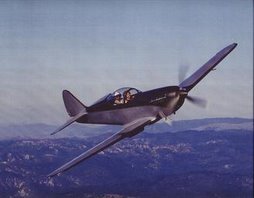
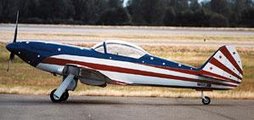
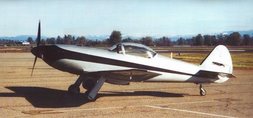
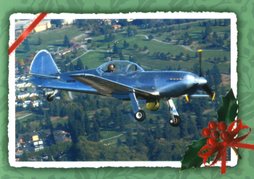
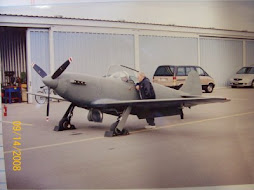
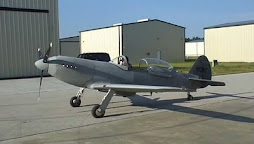

No comments:
Post a Comment